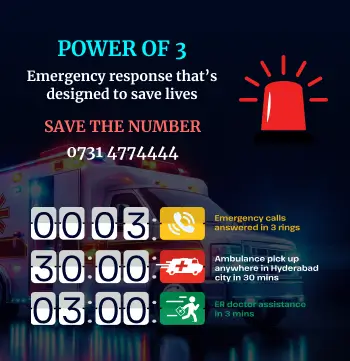Ventricular Tachycardia
Ventricular tachycardia is a serious heart rhythm disorder that causes the heart to beat too fast. This condition starts in the heart's lower chambers and can cause lethal consequences if not treated promptly. This guide aims to give a clear picture of ventricular tachycardia, covering its causes, symptoms, and potential complications. We'll explore how doctors diagnose this condition and discuss various treatment options, including medication and procedures.
What is Ventricular Tachycardia?
Ventricular tachycardia (VT) is a serious heart rhythm disorder that starts in the lower chambers of the heart, known as the ventricles. It causes the heart to beat too fast, typically at a rate of more than 100 beats per minute. This rapid heartbeat can prevent the heart from pumping blood effectively, which may decrease blood flow to the body's organs and tissues.
The following are two main types of ventricular tachycardia:
- Sustained VT: It lasts more than 30 seconds or requires immediate medical intervention due to its impact on blood circulation.
- Non-sustained VT: It stops within 30 seconds and doesn't cause immediate haemodynamic problems.
Ventricular tachycardia can also be classified based on its appearance on an electrocardiogram (ECG):
- Monomorphic VT shows a single, stable pattern of electrical activity
- Polymorphic VT has a changing pattern.
- Torsades de Pointes manifests as a unique twisting pattern of the ECG waves..
Causes and Risk Factors of Ventricular Tachycardia
Ventricular tachycardia has various causes and risk factors. These include:
- Ischaemic Heart Disease or Coronary Artery Disease: It is the most common cause of VT. This condition occurs when the heart muscle doesn't get enough blood and oxygen due to blockages in the coronary arteries.
- Other Heart-related Causes:
- Heart failure
- Myocarditis
- Enlarged heart (cardiomyopathy)
- Heart valve disease
- Previous heart attacks
- Surgeries that leave scar tissue on the heart
- Sarcoidosis
- Amyloidosis
- Idiopathic Ventricular Tachycardia: In some cases, especially in younger individuals, ventricular tachycardia may occur without any apparent underlying heart problem.
Risk factors for developing ventricular tachycardia include:
- A history of heart disease
- A family history of heart rhythm issues
- Severe electrolyte abnormalities.
- Excessive caffeine or alcohol consumption
- The use of recreational drugs like cocaine or methamphetamines
Symptoms of Ventricular Tachycardia
The symptoms of this heart rhythm disorder can vary from mild to severe. These may include:
- Palpitations or a Rapid Pulse: Individuals may feel their heart racing or pounding in the chest.
- Chest Pain: This discomfort can range from a mild ache to a sharp, intense pain. It's often described as a feeling of pressure or tightness in the chest.
- Difficulty Breathing or Breathlessness: This symptom can be particularly distressing and may worsen with physical activity.
- Dizziness, Lightheadedness, or Fainting (Passing out): They can occur due to the reduced blood flow caused by the rapid heart rate.
- Other Ventricular Tachycardia Symptoms: These include feeling unusually tired or fatigued, a sensation of skipped heartbeats or an irregular heart rhythm.
Complications
Ventricular tachycardia can lead to serious complications, especially in individuals with underlying heart conditions. These include:
- Life-threatening Arrhythmia: In patients with structural heart abnormalities, ventricular tachycardia can progress to a dangerous rhythm that may result in sudden death.
- Ablation: It is a common treatment procedure used to treat this condition and generally has a long history of safety and success. Potential complications of ablation include damage to the heart or blood vessels, blood clots, bleeding, and infection.
- Medications: In some cases, the drugs used to manage ventricular tachycardia may paradoxically cause more arrhythmias, including dangerous ones that could potentially lead to sudden death.
Diagnosis
Diagnosing ventricular tachycardia requires a comprehensive approach involving physical examination, medical history review, and various tests.
- Electrocardiogram (ECG or EKG): It shows how the heart is beating.
- Holter Monitor: Doctors may recommend wearing this device at home if a standard ECG doesn't provide enough information. This small ECG device is worn for a day or more to record heart activity during daily activities.
- Event Monitor: For longer-term monitoring, an event monitor can be used for up to 30 days or an implantable loop recorder for up to three years.
- Exercise Stress Tests: They are conducted to check heart function during physical activity.
- Imaging Tests: Chest X-rays, echocardiograms, cardiac MRI, or CT scans can help examine the heart's structure and identify any underlying issues causing ventricular tachycardia.
- Electrophysiological (EP) Study: It creates a detailed map of the heart's electrical signals, helping to pinpoint where faulty signalling occurs.
- Tilt Table Test: It may be performed to understand how ventricular tachycardia leads to fainting by monitoring heart rate and blood pressure changes in different body positions.
Treatment for Ventricular Tachycardia
The treatment for ventricular tachycardia depends on the severity of the condition & its underlying causes, including:
- For cardiac arrest due to ventricular tachycardia, immediate resuscitation following the advanced life support protocol is crucial.
- Cardioversion: Direct current cardioversion is the primary treatment for hemodynamically unstable ventricular tachycardia. This involves delivering controlled electric shocks to the heart to restore a normal rhythm.
- Medication Management: Medication is often the first line of ventricular tachy treatment for haemodynamically stable patients. Beta-blockers are commonly used to slow the heart rate and reduce the chance of ventricular tachycardia occurring.
- Catheter Ablation: In some cases, doctors may recommend catheter ablation. This involves using heat or cold energy to destroy the heart tissue, causing abnormal signals.
- Implantable Cardioverter-Defibrillator (ICD): Doctors may suggest an implantable cardioverter-defibrillator (ICD) for long-term management. This device, inserted under the skin near the collarbone, continuously monitors heart rhythm and delivers a shock to reset the heart if an abnormal rhythm is detected.
When to See a Doctor
Recognising when to seek medical attention for ventricular tachycardia is crucial. If you experience symptoms such as chest pain, fainting, or a fast and abnormal pulse, it's essential to call emergency immediately. These symptoms may indicate a life-threatening situation that requires urgent medical care.
Prevention
While it may not be possible to prevent ventricular tachycardia completely, there are several steps you can take to reduce your risk. These include:
- Have a balanced diet curated from fruits, vegetables, whole grains, unsaturated fats
- Do regular exercise
- Practice yoga
- If you're overweight or have obesity, lose excess body weight
- Be cautious with stimulants like caffeine, as they can trigger arrhythmias.
- Aim for up to 9 hours of sleep each night
- Alcohol in moderation or avoid it altogether.
- If you smoke, quitting is crucial for heart health.
- Avoid recreational drugs such as cocaine.
Conclusion
Taking care of the heart is key to managing ventricular tachycardia. This means eating well, staying active, and living a healthy life. If you have any worries about your heart, don't wait to talk to your doctor. With the proper care and attention, many people with this condition can lead full, active lives. Remember, your heart health is in your hands, so take good care of it.
FAQs
1. What is the leading cause of ventricular tachycardia?
The leading cause of ventricular tachycardia is often ischaemic heart disease, particularly in patients with a history of heart attacks. Damage to the heart muscle can create abnormal electrical pathways, leading to this condition. Other causes of ventricular tachycardia include cardiomyopathy, heart failure, myocarditis, and heart valve disease.
2. Can ventricular tachycardia go away?
Ventricular tachycardia may sometimes resolve on its own, mainly if reversible factors like electrolyte imbalances or certain medications cause it. However, in many cases, it requires treatment.
3. How does ventricular tachycardia affect my body?
Ventricular tachycardia can have a significant impact on your body. It can lead to a rapid heart rate, reducing the heart's power to pump blood effectively. This can result in shortness of breath, chest pain, dizziness, and, in severe cases, fainting or even cardiac arrest.
4. What is the most common cause of ventricular tachycardia?
The most common reason for ventricular tachycardia is underlying ischemic heart disease. This condition occurs when the heart muscle doesn't get enough blood and oxygen due to blockages in the coronary arteries, often caused by atherosclerosis.
5. How long does it take to recover from ventricular tachycardia cure?
Recovery time from ventricular tachycardia treatment varies based on the specific treatment used. For procedures like catheter ablation, patients may be able to go home on the same day or need to stay overnight for observation. Most people can return to work after a few weeks, but avoiding strenuous activities is advisable.
6. Can ventricular tachycardia be cured?
While ventricular tachycardia can be managed effectively, a complete cure depends on the underlying cause. In some cases, treating the root cause can eliminate the arrhythmia. However, for many patients, ongoing management through medication, lifestyle changes, or devices like implantable cardioverter-defibrillators may be necessary to control the condition and prevent complications.




